I oscillated hour to hour on whether or not to post this essay here–it is not the kind of writing I normally share in this space. Regular readers will know how much I care about whole foods, and that the farmers market is an essential facet of my cooking life, but I do not usually bring policy into the conversation.
Ultimately, I am posting this because I think the issues at hand are more important than my fears you won’t like what I have to say.
I recently spent a few days with a group of people who could not think more differently than me when it comes to food. After that experience, I needed a way to vent my frustrations, collect my thoughts, and clarify my views. If you already agree with what I write below, excellent. If you agree and are looking for a way to broach the subject with the people in your life who disagree or simply don’t know, I hope this essay aids that conversation. If you think I am totally full of cow manure, well, we are just going to have to agree to disagree. Either way, if you would rather simply read about a happy-go-lucky, apple-parsnip cake laced with rummy raisins and warming spices, click here to jump ahead.

It is a reflexive, instinctual knowledge—as sure as I am that the Frenchman would eat lamb with white beans every day if I cooked it, I am sure that humans are not meant to consume hyper-processed foods. Chemicals, additives, fillers, and preservatives may allow for cheap products, but they are not food; they are just that, “products,” masquerading as food. It is dangerous to fall into the belief that these products will sustain us—“No-Calorie Chocolate Syrup” is not real. When bottled salad dressing proclaims “Non-fat,” it should sound alarm bells: oil, one of the principal ingredients in actual salad dressing, is pure fat. (Which, by the way, our brains need to function.) If salad dressing has no fat in it, then what has been fundamentally altered to make it so? (Answer: sugar and chemicals are often the solution to making a fatty food suddenly non-fat.) I wonder how many purchasers of non-fat salad dressing question what they are eating, and what percentage of those people think they are actually being healthy?
The idea of “real food” versus the alternative extends to all aspects of the food system. The difference between factory-farmed and responsibly raised animals, for example, is so glaring, so tremendous; it is difficult for me to understand how people can reasonably defend the former. Factory-raised animals live stressful lives, and this affects the quality and composition of the meat. Even more alarming though are the hormones released by fearful animals—these hormones have been shown to cause disease in humans who eat that meat. Similarly insidious, consider the antibiotics most of these animals are fed to stave off disease, which we then ingest: antibiotics were never meant to be consumed so regularly, simply as a safeguard against cramped and dirty living conditions. The overuse of antibiotics has lead to antibiotic-resistance, the effects of which are passed on to human consumers. Even if you do not care a lick for an animal’s well being, indifference on this subject baffles me, considering the human cost of factory farming.
Of course there are also environmental consequences to factory farming, an endeavor that requires gobs of fossil fuel to function: huge amounts of animal waste release huge amounts of methane into the air, a worse offender than CO2 where global warming is concerned. This waste also gets into the water supply, causing its own set of multifarious problems.
While this model is profitable for large corporations, it is simply not sustainable. It also sets a terrible precedent, as it gives the impression that meat should be cheap. It isn’t! Imagine the work and cost required to raise an animal that does not live in cramped conditions, that does not eat subsidized, often genetically modified foods. The fact is, any meat production comes with a cost—environmental, monetary, and ethical. Meat should be expensive, and we should not be eating it everyday. When I buy meat, I want to know where it comes from, and the farming practices that delivered it into my hands.
Apathy on this subject boggles my mind. I have a hard time accepting others’ willful ignorance on the point. Factory farming is destructive, plain and simple. There are no shades of gray on this one. So why is it that so many people seem content to stick their heads in the sand when questioning the provenance of their food is concerned?
Farming produce is, of course, the other side of this coin. Consider the tomato: a tomato grown in Florida (most tomatoes in the US are grown in either Florida or California) is essentially raised in sand (with the aid of a whole bunch of chemicals, fertilizers, what have you). These tomatoes are picked (or, genetically modified) to be resistant to bugs and other blights, with very little thought to taste. The workers who pick these tomatoes (and inhale their chemicals) are paid so little; it is tantamount to modern slave labor. Compare this to a farmer who selects and saves seeds every year based on taste, and who grows their tomatoes in mineral rich soil. Their tomatoes may splat open when you drop one on the ground or try to ship it 1,000 miles away, but damn, does that tomato taste fine.
I don’t mean to oversimplify, but personally, I would rather put my money into the pocket of a farmer who cares about taste—what is the point of eating something that tastes bad, or like nothing at all? I also think that workers should be paid for their labor, which is yet another reason I enjoy direct interaction with my farmers. In the case of tomatoes, I choose not to buy them out of season; this is my way of speaking with my wallet. In the winter, I simply use canned tomatoes.
I am not a perfect person nor a perfect advocate, but taking the time to source quality ingredients just seems like common sense to me. I understand that people live busy lives, but it is not some horrendous inconvenience to visit a farmers market on a weekend morning. Bring the whole family. I can hardly think of a better activity to involve kids in, and they are more likely to eat produce they helped pick out themselves. Produce at the farmers market also tends to be cheaper than the same produce at the supermarket.
I was recently challenged, “But what if you were invited to a friend’s house, and they served food you didn’t approve of? Would you be rude and not eat it?” Well no, of course not. I am not a fanatic, and I would like my friends to continue inviting me over for dinner. Whenever I eat outside of the house, I strive to make good choices, but the truth is that we can never be 100% sure that food we don’t prepare ourselves comes from responsible sources. Again, I am not perfect. For the most part though, I shop and cook for my little family of two. I make buying decisions based both on social justice, as well as on taste: what food will nourish us best, in every sense? I also talk about food in general very often, as all of my friends can attest, and I volunteer with Slow Food NYC.
My interest in food and cooking is not just a silly hobby or a passing phase. Instead, it is the driving passion of my life. Food should be whole and real. It should taste good, and be produced by people who care, and are thusly compensated fairly for feeding me well. It should be a source of joy and comfort, bring people together, and nourish us in every way imaginable.
Growing up, food was not a source of joy at all—food was the enemy. Every woman was on a diet always, and we were encouraged to eat less—less calories, less volume. It has been a long road for me to arrive at a place where food is not the enemy, but instead a fulcrum of happiness and fellowship. Because as much as I love the physical act of cooking, what I adore most is sharing food with others, creating community around a kitchen table. Quality and seasonal ingredients play an essential role in this—there is satisfaction in eating foods at the peak of their ripeness, and a pleasure inherent to following the seasons—a June strawberry is worth waiting for, and something I anticipate each year.
I hope my recipes show others that, once you master a few basic cooking techniques, great ingredients are all you need to put together a stunning meal. Nothing need be overwrought or complicated. It does not matter where you live, or how small your kitchen is. Armed with a little knowledge and excellent materials, you can create delicious, soulful, and sustaining meals for yourself and those you love. If we are what we eat, I cannot envision a more vital occupation than making sure that what I put into my body benefits not only myself, but also the planet, and everyone else in the food system it touches before reaching me. Stellar food is everything. It makes every meal a celebration.
This cake is a fall and winter workhorse. It is soft, spiced with cinnamon, nutmeg, and dark rum, sweet with apples and raisins, and ever so slightly spicy with parsnip. You can make it a night ahead; it holds well. Serve it as Christmas breakfast, with tea or coffee, or as a hostess gift. Make it just because you feel like it. I took inspiration from this cake, plus a super moist parsnip cake from my favorite restaurant. The apple cider in the glaze isn’t too pronounced; if you want it to be more so, you can boil-concentrate three tablespoons worth, with warming spices if you like. (Or, instead of the apple cider, try some of the raisin liquid in the glaze.) Any remaining raisin liquid should definitely be repurposed into a cocktail. Feel free to increase the amount of raisins, or to add toasted walnuts. If you don’t have golden bakers sugar, substitute 2/3 cup light brown sugar + 2/3 cup white sugar instead.
1/3 cup golden raisins
1/3 cup + 3 tbsp apple cider, divided
1/3 cup dark rum
1/2 vanilla bean (or 1 tsp vanilla extract)
12 tbsp unsalted butter, at room temperature, + more for greasing the pan
1 ⅓ cup golden bakers sugar
4 large eggs, at room temperature
2 cups flour
2 teaspoons baking powder
1 teaspoon cinnamon
1/2 teaspoon (freshly grated) nutmeg
1/2 teaspoon kosher salt
1 large apple (I like jonagold)
1 parsnip
1 cup confectioners’ sugar
1 teaspoon lemon juice
To a small bowl or container, add the raisins, the apple cider, 1/3 cup of the rum, and the vanilla bean, scraped, both seeds and pod. Cover the bowl or close the lid on the container, and allow it to sit overnight. (Alternatively, you could simmer all those ingredients together for about 20 minutes. Just allow the liquid and the raisins to cool before adding them to the cake.)
Heat the oven to 350F. Grease a 9-inch diameter Bundt pan.
Using an electric mixer on medium speed, cream the butter and the sugar for 3 to 4 minutes, until the sugar fully melts into the butter and fluffs up. Add the eggs one at a time, mixing as you go. Sift together the flour, the baking powder, the ground cinnamon, the nutmeg, and the salt. Add the dry ingredients to the wet, mixing the batter on low speed, just until everything is incorporated.
Meanwhile, peel and core the apple. Peel the parsnip. Shred both. You can use a box grater, but I like to use the shredding disk of my food processor. Add the shredded apple and the parsnip to the batter.
Drain the raisins, but reserve the raisin liquid. Add the raisins to the batter, along with 2 tablespoons of the raisin liquid. Mix on low speed, just until combined. (Any leftover raisin liquid should be put toward a cocktail or hot toddy for the cook.)
Spoon the batter into the greased Bundt pan, and move the pan into the oven. Bake for 45 minutes, or until the top is golden brown and a toothpick comes out clean. Out of the oven, allow the cake to cool for at least 1 hour.
While the cake is cooling, make the glaze: In a small bowl, whisk together the powdered sugar with the remaining 3 tablespoons apple cider and the lemon juice. (Or, substitute some of the remaining raisin liquid for the apple cider.)
Take the cake out of the pan, and move it to a plate. Pour the glaze all over the top. Covered, this cake is good for up to 2 days.
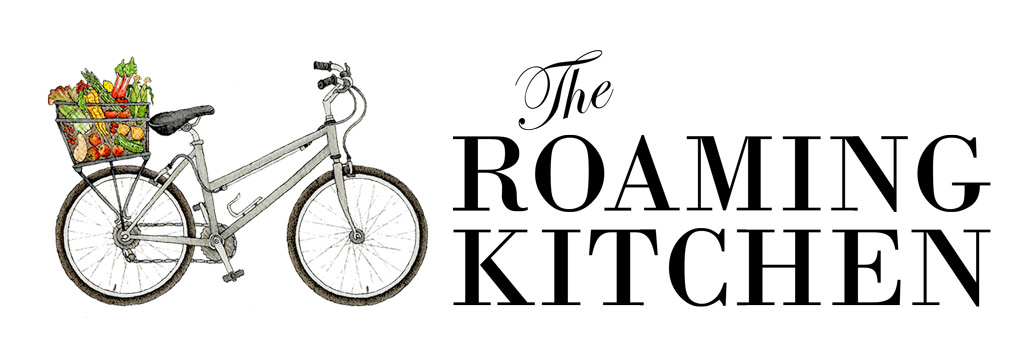
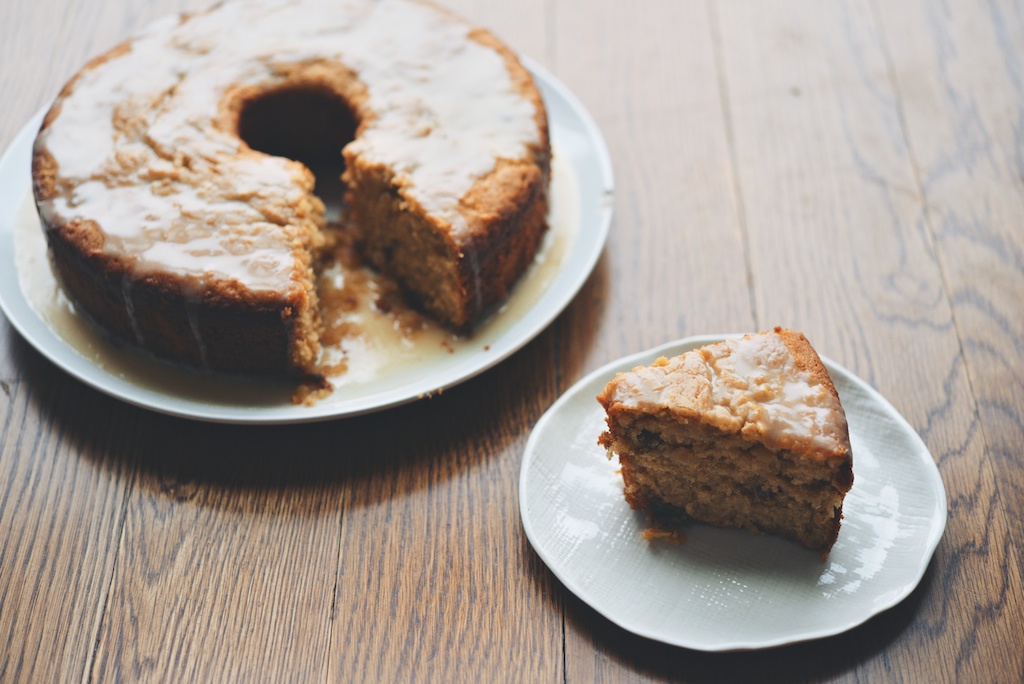

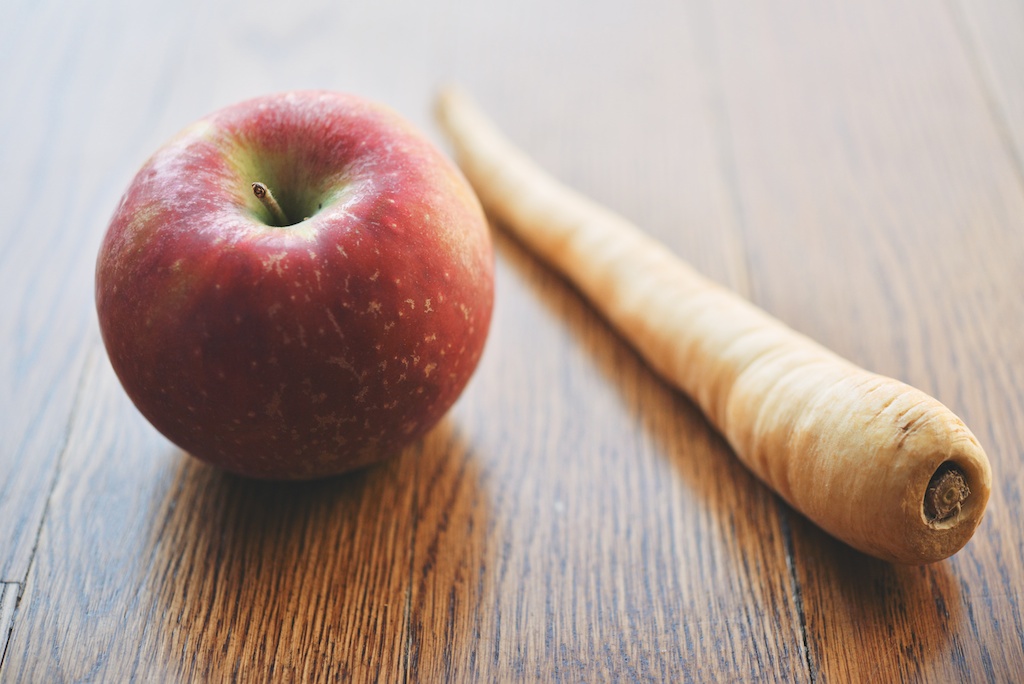
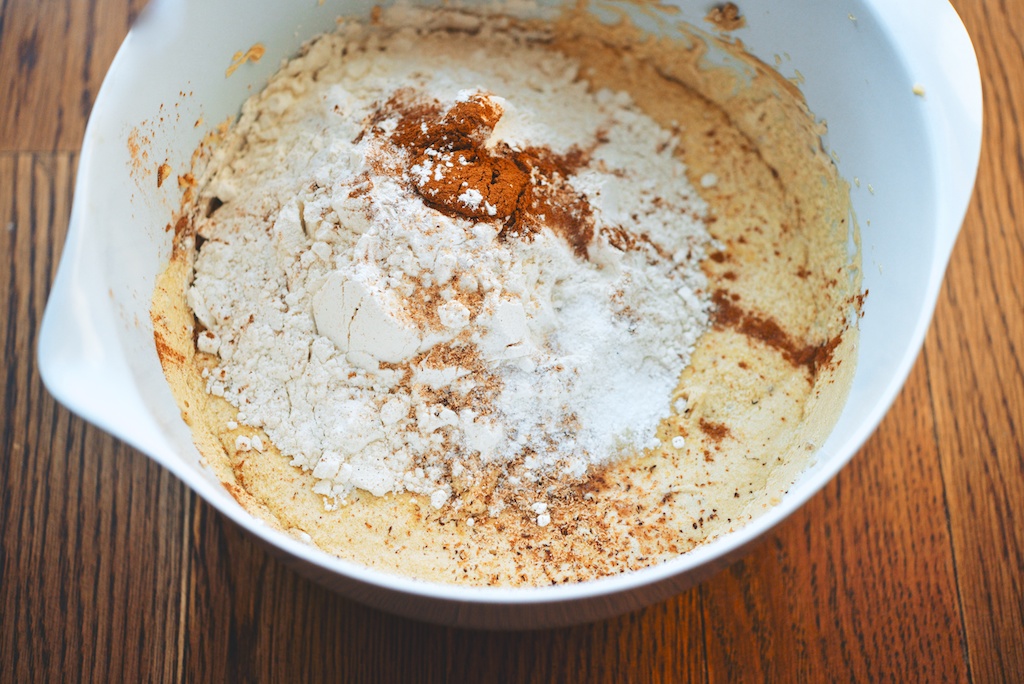
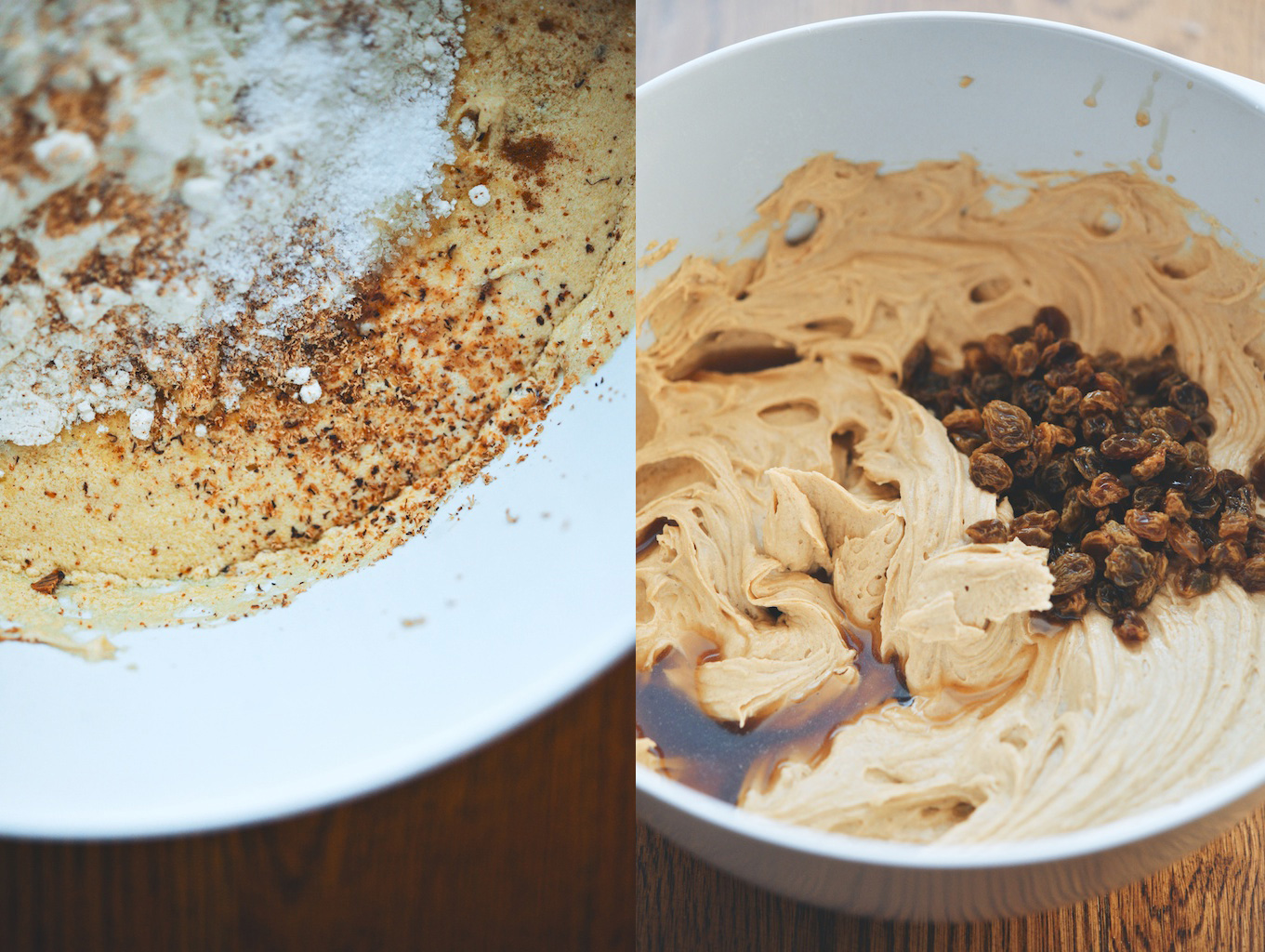
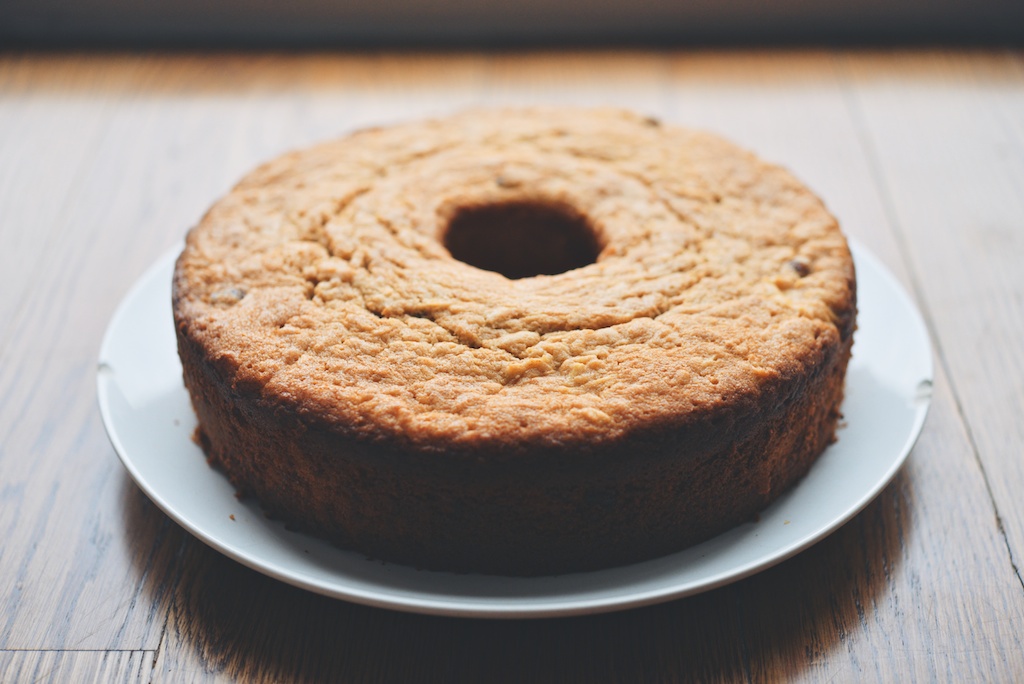
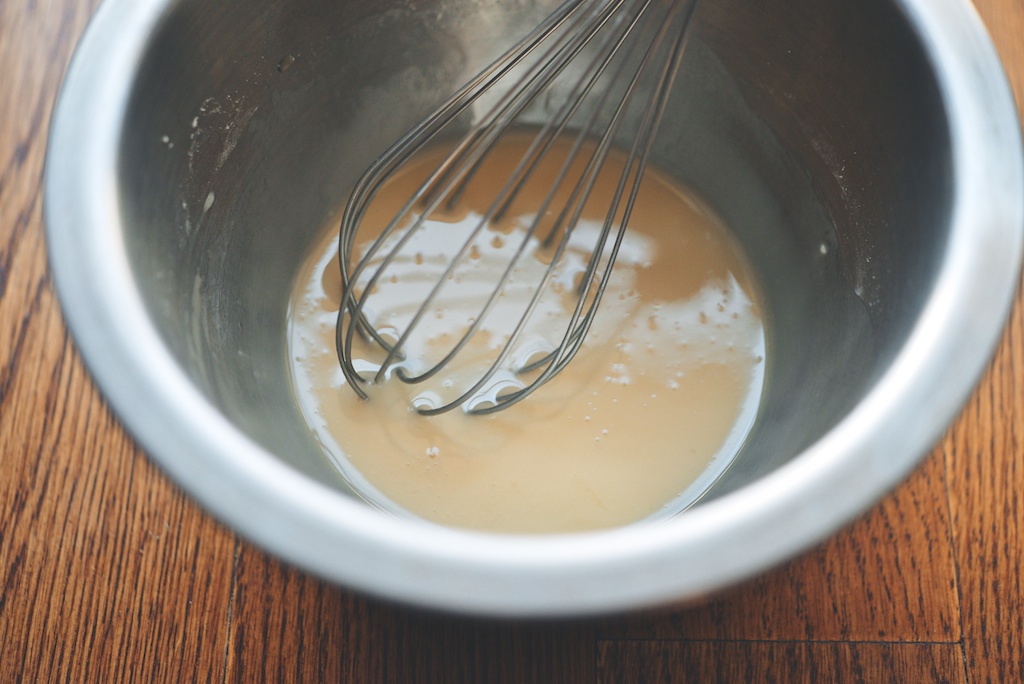
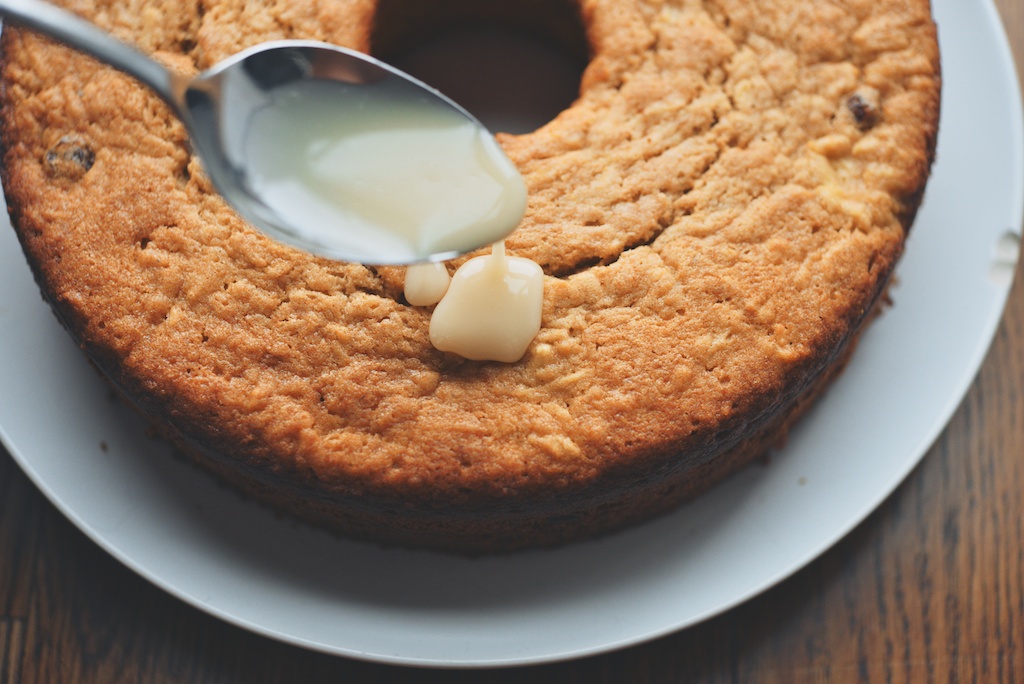
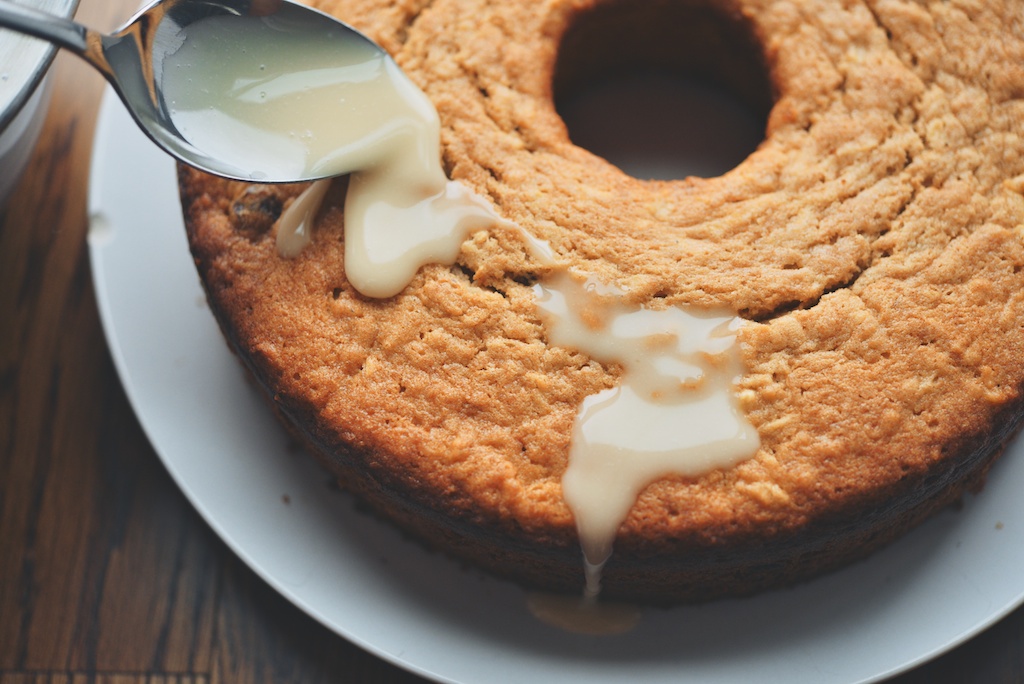
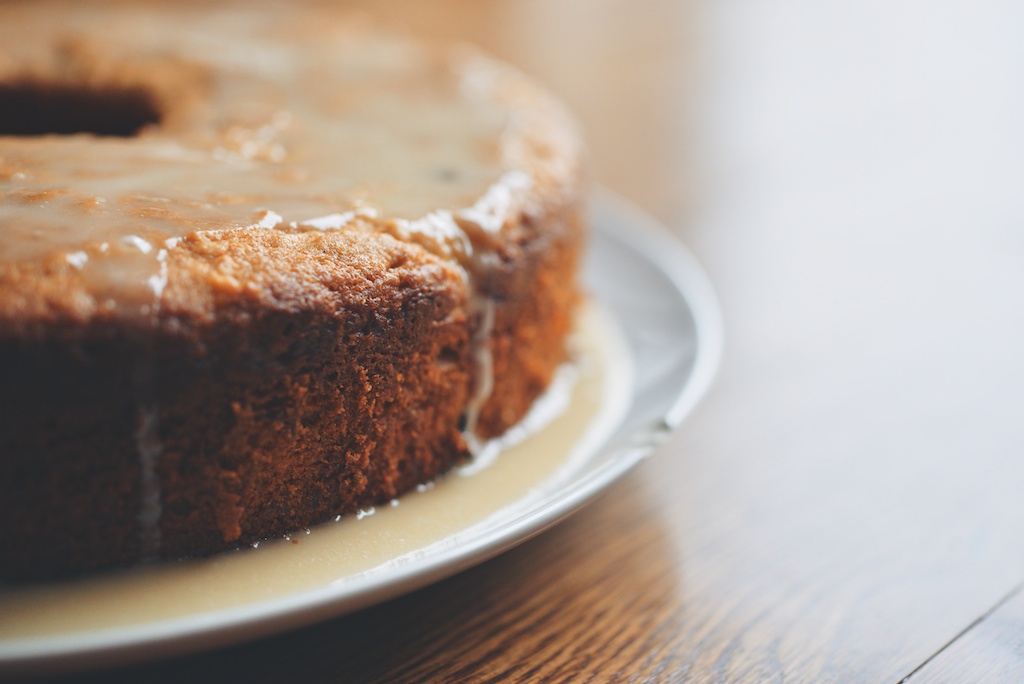
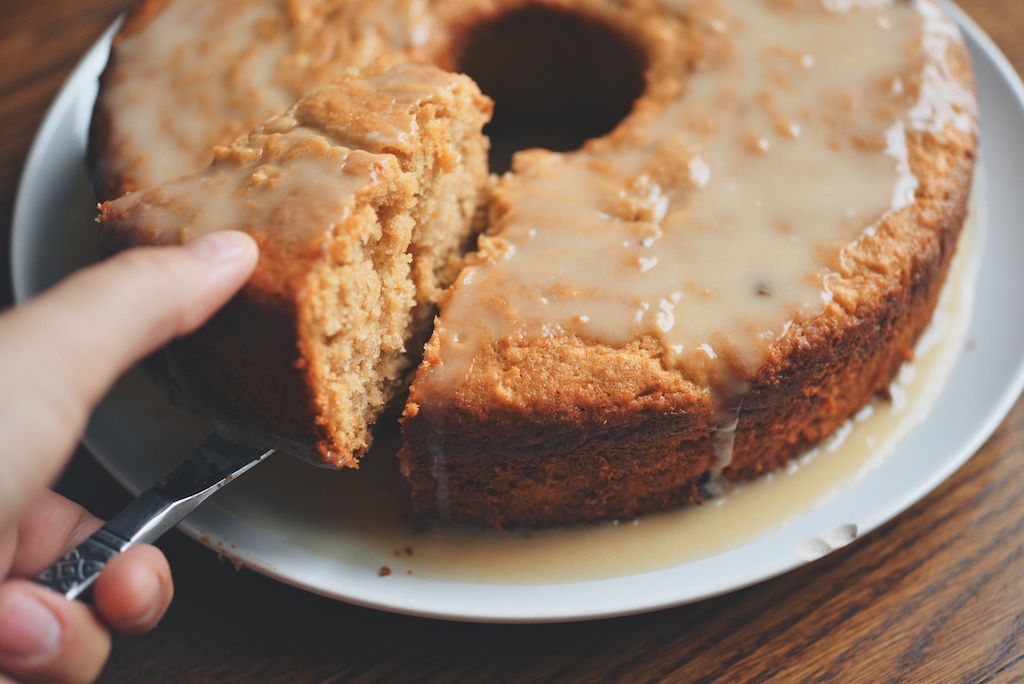
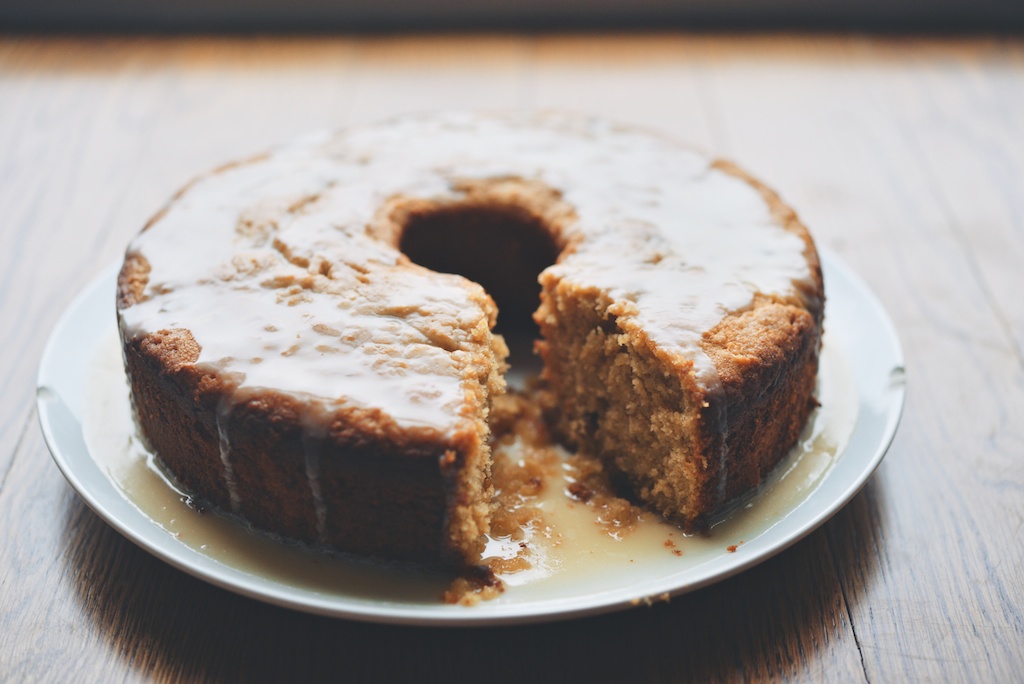
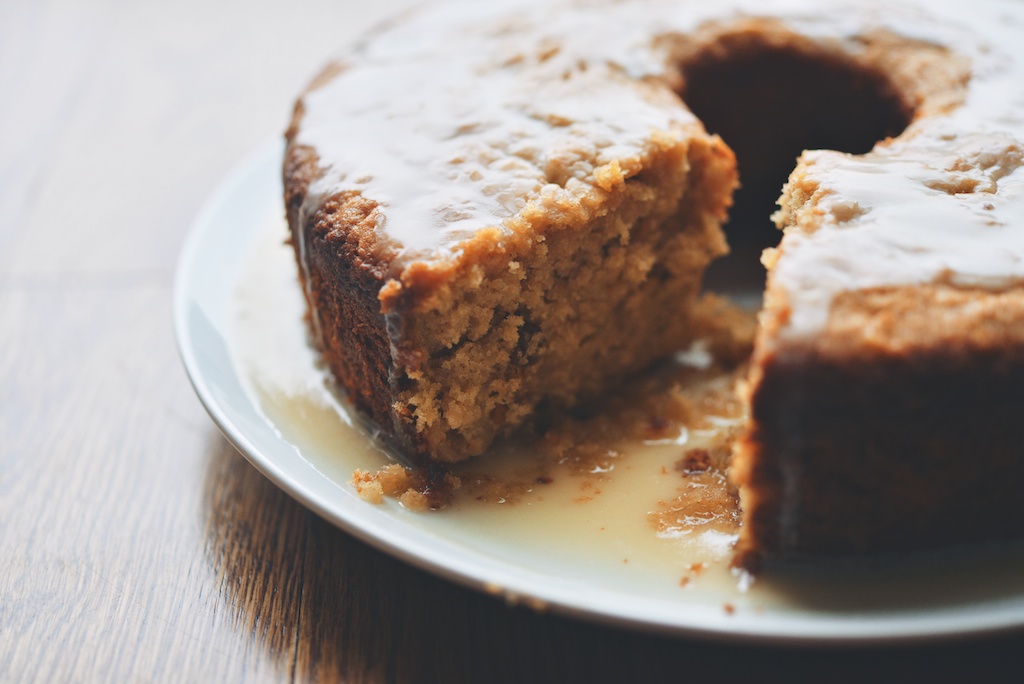

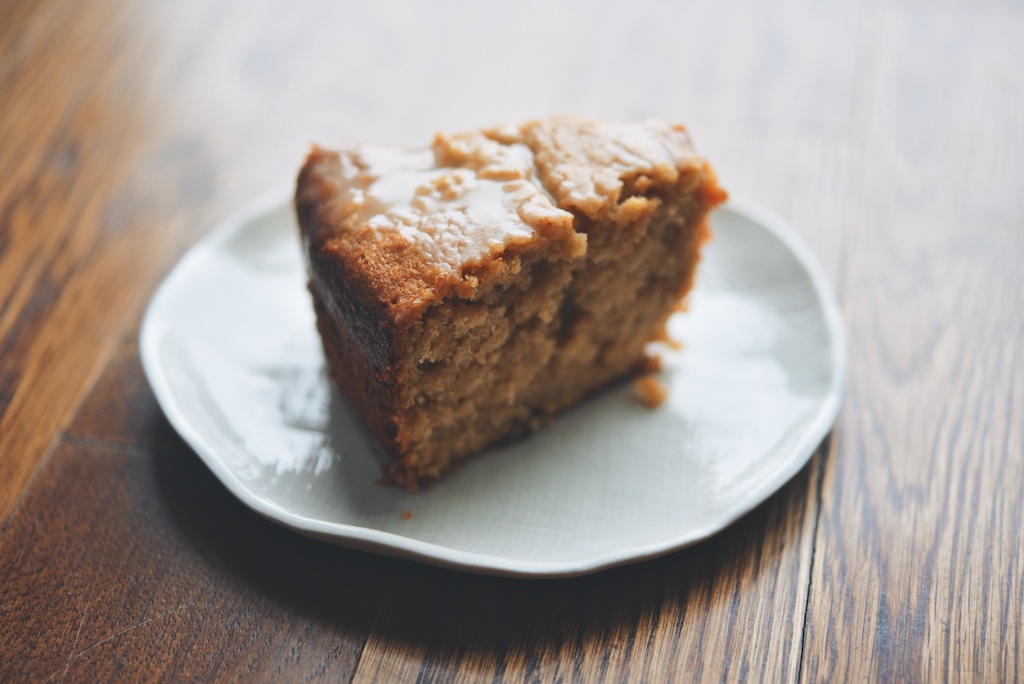
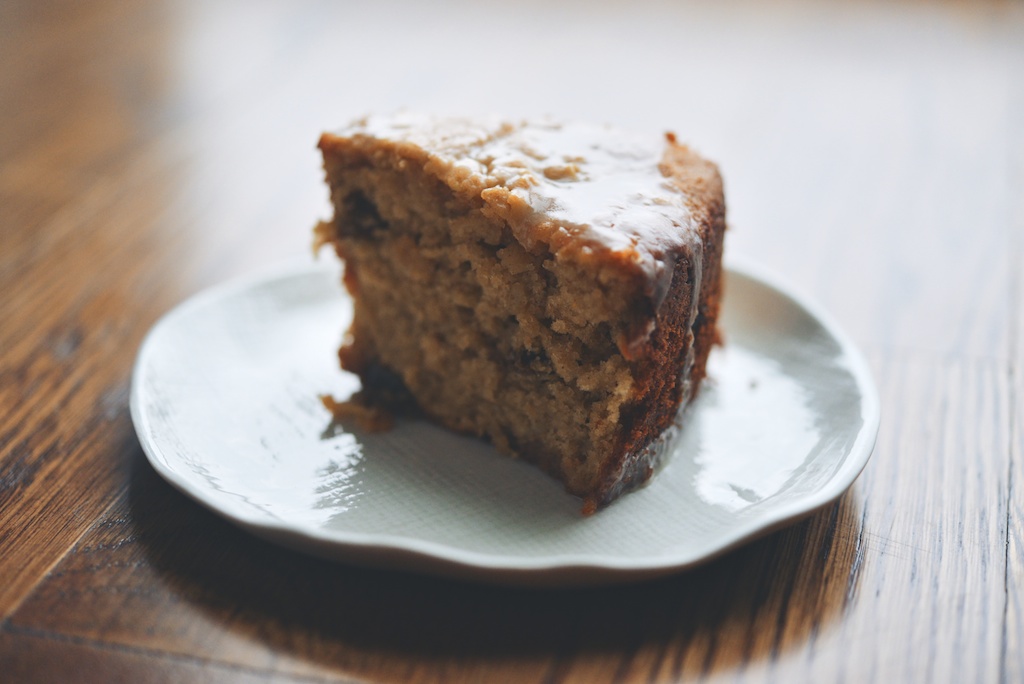
Love this post, choose real food not “food products” whenever possible!
Cristina-
What a thoughtful, well-worded and poignant piece. We need more thinking like this, especially making the transition from food as enemy to food as joy. And that recipe looks amazing!!
I agree with every word! Thank you for sharing and this cake looks delicious. Quick question: I’m not familiar with golden baker’s sugar. Is it like brown sugar?
Thanks, Christina! Golden Bakers Sugar is lighter than even light brown sugar, so it can be used interchangeably with white sugar. It is sand-colored, and has just a faint molasses taste. I find it a bit more interesting and tasty than white sugar. However, this cake can definitely be made with only white sugar, or a combination of white and light brown sugar, depending on your preferences.
I couldn’t agree more! I am turning my passion for food into a “profession”(although food will never be just a job for me) by following a diploma course in nutrition and I can’t believe we are still taught about calorie counting. All you need to do is eat real, unprocessed food! Once you remove artificial/refined ingredients and added sweeteners/salt from your diet as much as possible your body is intelligent enough to regulate its appetite to ensure its nutritional needs are met. No need for obsessive restrictions!
I completely agree! Thanks for sharing your thoughts and a wonderful recipe!
I had to chuckle at whomever asked you if you would deny your friend’s food. I tried out vegetarianism for a couple years, and one of the most frequent questions I got was “if you were starving in a desert…..”, followed by a triumphant look as if they had “gotten” me. I share your belief that real food = real food. Simple as that. And I appreciate your love and passion and your bravery in putting it out to the public. Kudos.
A-men. You said it!
I’ve just found your blog and I wanted to thank you for the lovely, accessible recipe. Many bloggers in the whole foods/health conscious realm present recipes that just aren’t realistic for many people’s budgets (at my grocery spelt flour is $9 for small, probably not fresh bag). This recipe sounds delicious and features ingredients many people can find and afford. Kudos!
I can’t believe that I have only just discovered your blog! You are an incredible writer, your personality just bounces off the page not just in your words but your amazing photographs and beautiful food as well. I’m so thankful for your little haven of a blog. I am so, so excited to start digging through some your beautiful recipes and meditating on some of your great ideas. Thank you for what you put out into the world, it’s beautiful!
I am always looking for a way to make root vegetables in dessert. Certain ones have a earthy sweetness nothing can be compared to. Thank you for this recipe.
Doreen P.